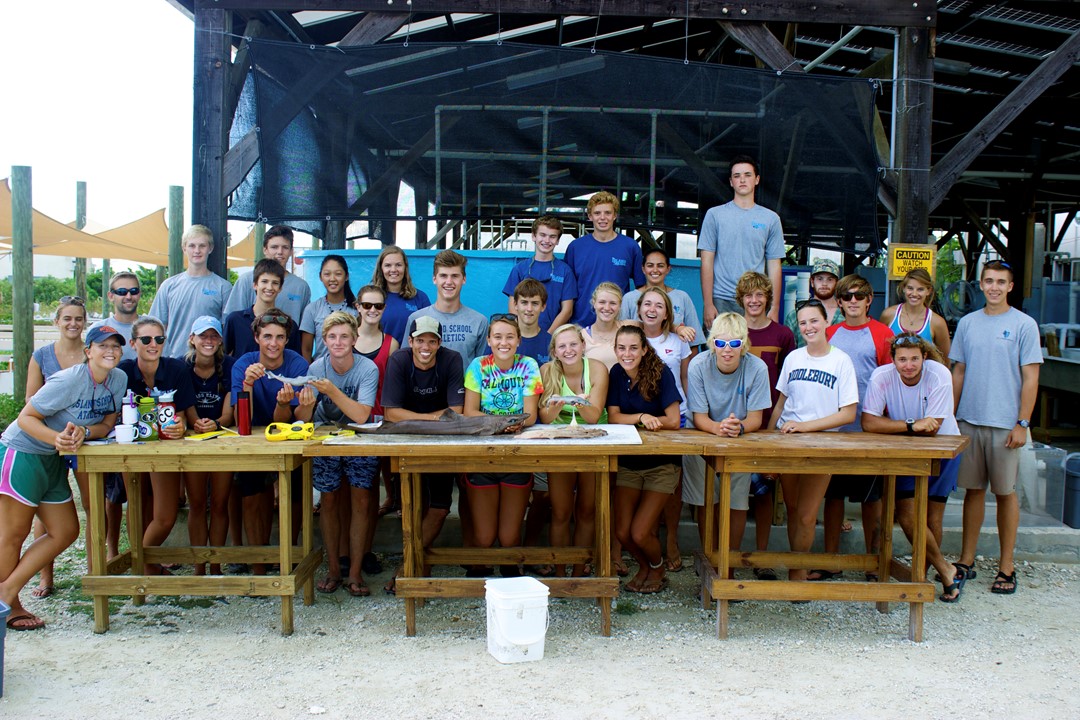Catch and Release
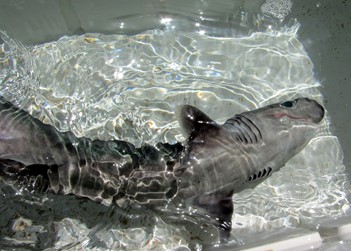
Overview
Our work takes place in Exuma Sound, The Bahamas through a partnership with the Cape Eleuthera Institute and The Island School. There, unique access to deep water from the island of Eleuthera allows us to conduct fisheries research in 500-1000m of water after a short boat ride from our field station. So far, we have captured over ten species of deepwater fishes, including elasmobranchs ranging from the rare sharpnose sevengill shark (Heptranchias perlo) to the prehistoric bluntnose sixgill shark (Hexanchus griseus).
Deep-sea Shark Bycatch
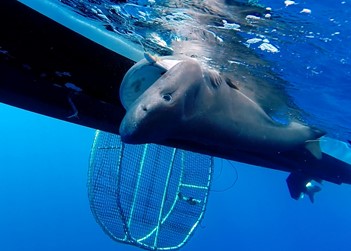
As technology has advanced and coastal stocks have declined, vessels have progressively fished deeper in an effort to reach previously unexploited populations (Morato et al., 2006), increasing the occurrence of fishing interactions with data deficient deep sea shark species. Unfortunately, many of these animals go unused and/or unmanaged and contribute to marine bycatch, estimated at 38.5 million tonnes annually and comprising over 40% of global marine catches (Davies et al., 2009). Those thrown back alive face physiological disruptions and locomotion impairment, potentially leading to post-release mortality or direct predation following release. To mitigate the greatest insults to their condition and increase survivorship, we must first estimate post-release mortality (PRM) and then attempt to identify the drivers of decline. This information will allow for more accurate accounting when drafting bycatch quotas and management plans.
Target Species
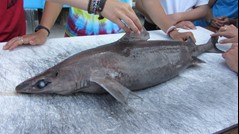
Despite common fishery interactions (NMFS, unpublished data), S. cubensis is listed as data deficient by the IUCN, with full stock assessments precluded by a lack of basic life history data. The species is endemic to the western Atlantic Ocean and the Gulf of America and likely feeds on benthic invertebrates and fishes. In Exuma Sound, we find Cuban dogfish between 400 and 700 meters deep.
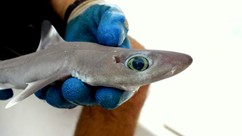
Gulper sharks are commonly targeted for their liver oil, which can be used in cosmetics, high grade machining, and pharmaceutical industries. They are one of the most highly exploited deep sea sharks worldwide, yet have one of the lowest reproductive potentials of any marine fish. In Exuma Sound, we find them between 600 and 900m deep.
Methods
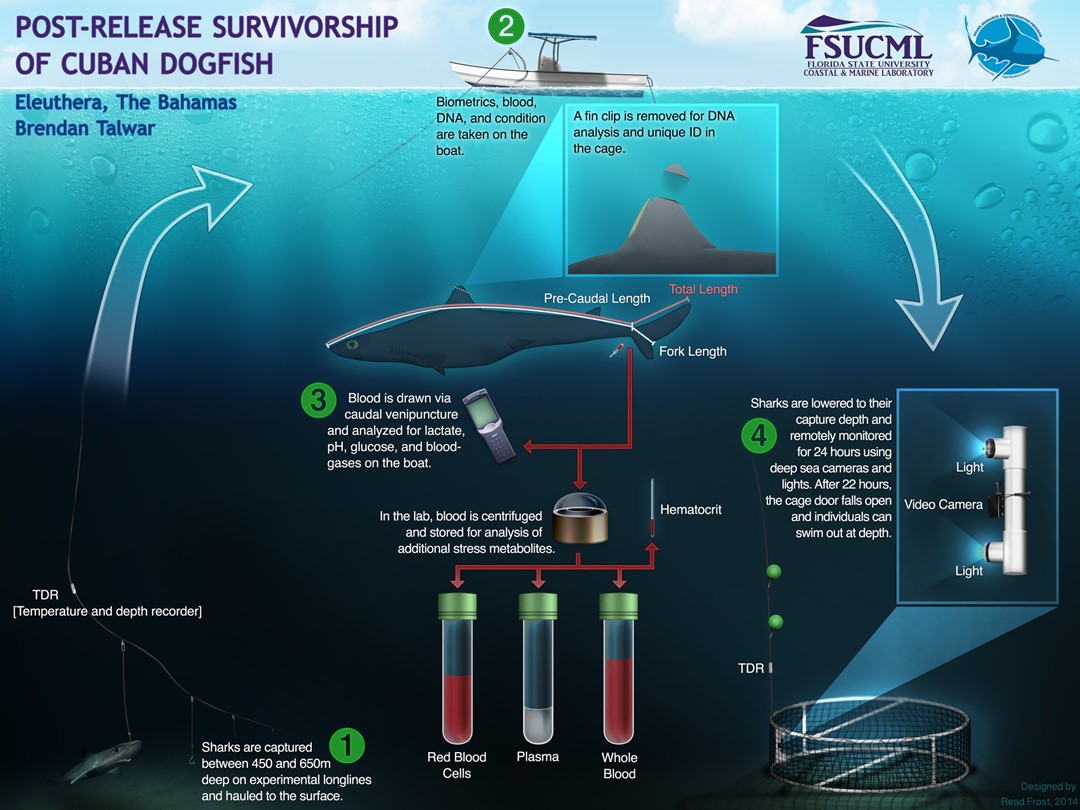
Post-release Survivorship
Two Cuban dogfish recover from capture inside the cage at 600m deep. Both individuals went on to swim out through the cage door after 22 hours
To date, the estimated 24hr post-release survivorship rate for Cuban dogfish caught on longlines is 47%, with over 40 individuals captured and monitored after release. It appears that individuals that survive typically begin swimming inside the cage within the first three hours, while those that go on to perish typically do so within two hours. We have also found that total length and at-vessel blood pH can be good predictors of post-release mortality, which could have implications for selective harvest limits down the road.
Future Work
We hope to continue this work through 2015 to build on our sample size for Cuban dogfish while also targeting gulper sharks at a deeper depth. We’re unsure of how mortality rates will compare between the two species, but predict that gulper sharks will be more susceptible to the stress associated with capture due to species-specific characteristics as well as the drastic change in temperature, light, and pressure when hauled from 800m deep to the surface. You can follow our progress on the project blog here.
